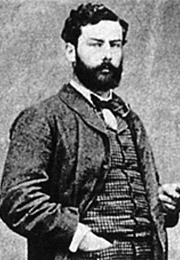


Oil on canvas
66.0 x 81.3 cm. (26 x 32 in.)
frame: 89.4 x 105.6 x 8.0 cm. (35 3/16 x 41 9/16 x 3 1/8 in.)
L.1988.62.16
Signed and dated lower left: A. Sisley 1889
[Georges Petit, Paris]. [Jacques Seligmann & Co., New York, by 1941]. [possibly Pierre Nesi, an agent who frequently worked with Seligmann]. Ricardo [Richard] W[ilhelm] Staudt (1888–1955), Buenos Aires; by descent to Isabel Koenigs de Staudt, Buenos Aires, in 1955; estate of Isabel Koenigs de Staudt, Buenos Aires, by 1969; [Nicolas de Koenigsberg, Buenos Aires, acting on behalf of Jaime Perriaux, executor of de Staudt estate]; sold to Henry Pearlman, 17 Feb. 1969; shared by Henry and Alexander Pearlman; Alexander Pearlman sold his share to the Henry and Rose Pearlman Foundation in 1978, and Rose sold her shares to the Foundation in 1985.
Like many of his Impressionist colleagues, Alfred Sisley painted villages on the outskirts of Paris, both along the banks of the Seine river to the west and surrounding the Forest of Fontainebleau to the south. Railway lines laid in the early to mid-nineteenth century had made these largely rural hamlets easily accessible to city dwellers.
This painting was an unusual acquisition for Pearlman, a collector who generally favored post-Impressionism and later styles. Sisley was a landscape specialist who worked in the manner of Claude Monet, painting out of doors, directly from the motif, and employing touches of high-keyed colors in visible strokes that suggest a fleeting moment in time.

Alfred Sisley (1839-1899)
Sisley was an Impressionist painter whose primary focus was landscape. His bucolic scenes embody many of the quintessential features associated with Impressionist landscapes: broken brushwork and a fresh, bright palette that captures the changing effects of light and atmosphere. Although he was born in Paris and spent most of his life in France, Sisley was a British national, and his two attempts to gain French citizenship failed. When he was a young man, his parents sent him to London to train in business for several years; he might have developed his interest in art there. His first known artistic training began in 1862, when he joined the studio of Charles Gleyre, where future Impressionist painters Pierre-Auguste Renoir, Claude Monet, and Frédéric Bazille also worked. Sisley soon joined these and other artists in painting in the open air of the Fontainebleau forest, gradually developing his distinctive style through the direct observation of nature. By 1870, Sisley’s work had been accepted to the official Salon several times; he subsequently joined his friends in five Impressionist Exhibitions in the 1870s and early 1880s.
Sisley’s output was prolific in the last several decades of his life, in part because of the financial troubles he suffered after his family business failed in the 1870s. While he worked for a time in Paris, Sisley spent much of his career painting in villages along the Loing and Seine rivers, often featuring the rivers and their tributaries as elements in his compositions. He frequently explored variations on similar scenes, with nuanced changes in color and composition. While continuing to emphasize harmonious effects of color and light, Sisley’s brushwork often became more vigorous in his later works.